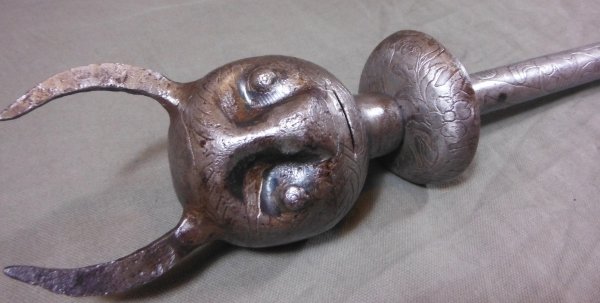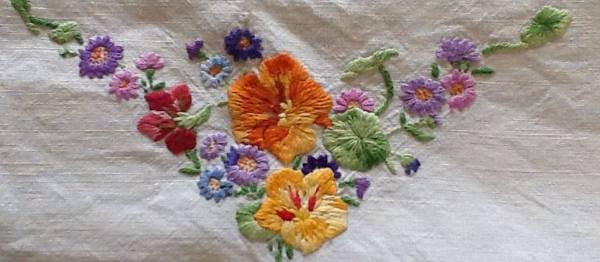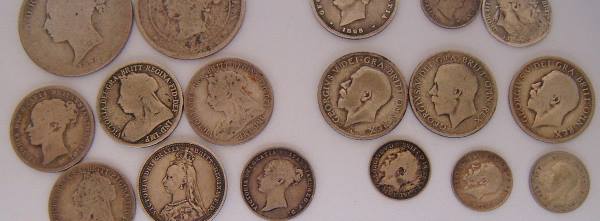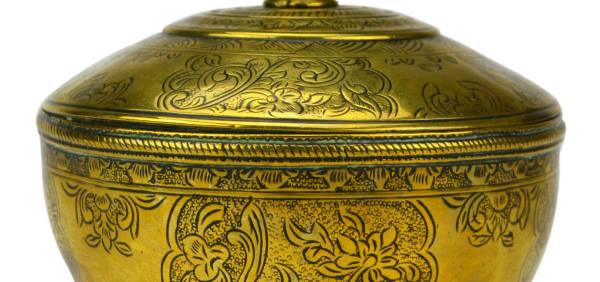At one time I collected musical boxes both antique and modern and as I now collect old bears and discovered that I could combine the two, it was a natural progression for me to start collecting antique musical bears.
Many people collect them today and it is nice to know that so many of the old manufacturers made musical teds as well as the ‘ordinary’ ones.
Perhaps one of the best known and most prolific makers of the English musical bears is Chiltern. One of the hardest to find in good condition is probably their ‘bellows movement’ Hugmee, as there is so often a bald place where the bear has been pressed repeatedly in his tummy to work the musical movement. Quite often the movement itself is not all it should be and at times the tune is almost unrecognisable, as teeth from the small comb on the rotating drum inside the bear may be broken. However they can still be found in good condition and I have a lovely example of one of these bears, whose movement is in good working order.
Chiltern also made the delightful musical ‘Bruin Bear’ which incorporates a key- wind movement with the added attraction of the bear being able to turn its head from side to side as the music plays. These were made from dual colour mohair plush, the most common of which was beige and white but they can also be found in blue and white and pink and white.
Their ‘Silky Bear,’ made in 1929, was the company’s first artificial silk bear which contained a keywind musical box. This is a very early bear and although many of us think of artificial silk as being from the 50s and 60s, this is not the case.
Although not strictly a musical bear, the Chiltern ‘Ting-a-ling’ contained a cardboard tube fitted with an internal metal ring of metal teeth arranged around its circumference. A metal clapper suspended from the top strikes each tooth when the bear was shaken, making a musical sound. These bears have sweet faces and are extremely collectable today, although often the mechanism is inoperative, making those in good condition even harder to find. Chiltern also made musical pandas but these are rare and should be snapped up immediately if you are fortunate enough to find one.
Surprisingly, considering the amount of bears made by Chad Valley, fewer musical bears appear to have been produced by this company than by Chiltern. Blue mohair plush bears with a ‘squeeze-box’ mechanism were made in the 1930s and some with wind up movements in the 50’s and 60’s but even though I questioned an ex-employee of Chad Valley and a repairer of old bears, I failed to discover any more information on musical bears from this prolific manufacturer, although they certainly do exist.
In 1937, Farnell, the ‘Rolls-Royce’ of British soft toy manufacturers, made a range of bears containing the Swiss made ‘Stop and Go’ musical movements, to which they held the sole rights. Some of the teddies were made from artificial silk plush and others from mohair but although the company produced a large amount of top quality bears and numerous musical soft toys until it merged with Acton Toycraft in 1964, surprisingly few musical bears appear to have been made by this well-known company either.
Pedigree however made many musical teds, which for the most part are charming characters with very sweet expressions and the large ears which characterise this manufacturer. These are to be found fairly frequently at auctions and Bear Fairs and are fairly inexpensive compared to musical bears by some of the other makers. These delightful teddies can also be found with bells in their ears in addition to their musical movement.
Merrythought, one of the best known of all British manufacturers and one which is still in production today, also made a few musical bears but the majority of these were not introduced until the early Sixties. However a 1959 price list said that musical movements could be added to Cheekies if required. The musical movement was also put into their 18” ‘GM’ range and the popularity of these bears continued, but Merrythought make far more musical bears now than they did in the early years.
A novelty ‘Chime Bear’ was produced in 1961, made from pink or blue nylon and shaped rather like a cylinder. He had a head and arms but no feet, and chimed as he was shaken.
Leco Toys made a range of animated musical toys in 1957, among which were some unusual bears with a key-wind movement. Some were made from golden lambskin and had a triangular head with an upturned muzzle, which moved from side to side as the music played. This company ceased trading in the early 70’s so any bear identified as a Leco will now be well over thirty years old and probably much older and even if not a vintage bear, is still worth adding to a hug because of the unusual head movement, together with its musical movement.
Another British company, Ealontoys, originally the East London Federation Toy Factory, established in 1914 by Sylvia Pankhurst, produced musical bears in the thirties. Some of these were of artificial silk plush and contained a Swiss-style musical box with a brass ring at the back. Bears made by this company had a label on the foot with the words ‘EALONTOYS’ printed on it. Any bear of any make which has a brass ring or key, as opposed to a silver one, will be fairly old. The ‘tinnier’ type of key seen now denotes a relatively modern movement and the sound quality of the old musical movements are far superior to the modern ones.
The Irish company ‘Tara Toys’ also made musical teddies and bears from this company bearing the label ‘MADE IN EIRE’ were made between 1938 and 1949.
In 1954, they produced a 23” bear with a keywind mechanism with the words on the label on the left foot, ‘MADE IN REPUBLIC OF IRELAND,’ which dates it after 1949, when Southern Ireland left the British Commonwealth to become a Republic. This large bear with his distinctive nose stitching is very handsome and would be an asset to any hug.
In the 60’s, ‘Tara’ made novelty toys, among which were ‘Freddy the Laughing Bear’ and the musical ‘Tara the Tuneful Teddy.’
Eduard Cramer made some lovely teddies which are distinctive in that the musical movement is operated by tilting the head backwards and forwards. In the 1930s, the company made a musical clown which walked and danced, in addition to playing a tune. Many of his bears were made from coloured mohair and I would certainly like to add one of these to my hug.
The American ‘Knickerbocker Toy Company’ made some beautiful musical bears with keywind and bellows movements, although the latter are rare. However, at Birmingham last year, I did see examples of both on the stand of ‘Blue Ribbon Bears.’ The keywind bear was white, whilst the bellows movement teddy was a soft brown. Both were in superb condition, with long silky mohair and the tone of the musical movement belonging to the latter was lovely. These delightful characters had the unmistakable triangular heads and faces, with wide apart eyes, rounded ears and wistful expressions of Knickerbocker bears and if I had had the money, I would have bought the brown ted there and then! Considering his rarity, he was priced very reasonably at £460.
Other makers of antique musical teddies include Steiff, who made a bear with a ‘sqeeze-box’ mechanism in 1928, but not many musical Steiffs appear to have been made until more recent times. However in 1996, a rare musical Teddy Baby with a concertina musical movement, and bearing the ‘US Zone’ label, was sold by Christies. Replicas of two much earlier teds with bellows movements were made in 1991 and 1992 and there do appear to be far more modern musical Steiffs than earlier ones; a trait which seems to apply to many of the well-known makers except for Chiltern, whose tuneful bruins were prolific.
Another maker well-known for his musical bears is Joseph Pitrmann of Nuremberg, better known as ‘Jopi,’ which he registered as his tradename in 1922. Pitrmann made such bears until the 1950s and they are among the most sought after of all the German makes today. Their Swiss musical box movements have a superb tone, and are marked with the word ‘Helvetic.’ Any Jopi in good condition now regularly fetches over £2,000 at auction. A wonderful pink example appeared on the Antiques Roadshow in 2002 and was given the extremely conservative estimate of £700 by Hilary Kay. This bear came up for sale in the Christies sale in June 2004 and made £3,500! He was particularly desirable as he was in pristine condition and was a bright and lovely colour, having been in a drawer for many years! Still, it did preserve his original colour and condition, thus adding greatly to his value.
Another well-known German company, Schuco, also made musical bears, which sometimes incorporated other features such as the Yes/No mechanism, and ‘Tricky’ bears with a keywind movement were an example of this delightful combination. They have been sold at Christies and will no doubt appear there again, so keep your eyes open for them.
At Birmingham, I also found a ‘Teddy/Doll Clown’ in beautiful condition, which contained a bellows movement. This is a very rare find and apparently Miller’s had been photographing it for one of their Guides just before I took its picture!
There was also a delightful ‘Golly Ting-a-ling’ on another stand at the same fair.
It is impossible to mention all the makers of musical bears in the allotted space but for anyone who collects them, they are out there just waiting for the right person to come along and give them a home, so keep your eyes open at all the auctions and Bear Fairs you attend and you will be surprised at the variety of tuneful teds you will find. However, it is worth remembering that the price of teddy bears, like everything else in the antique market, has dropped considerably in the last twelve months, so my advice would be not to buy one ‘for investment,’ as you will probably end up losing money. Only buy a bear if you like its face. The chances are that if it appeals to you, it will also appeal to someone else. This applies to everyone, whether you are a dealer or a collector.
I would like to thank everyone who has been so generous in allowing me to photograph their musical bears.
Bear restorers Dot Bird and Elwyn Roberts, Gay Wimpory, all of whom sent me discs with photos of old musical bears, Bourton Bears, Blue Ribbon Bears, Christies, who were very helpful when I asked them for information, and the many other old bear dealers who showed no surprise when I walked around the Birmingham Bear Fair, which was held at the Motor Cycle Museum, asking them if they had any musical bears and if so, if I could photograph them. Everyone was so nice and friendly and did their best to help me.







